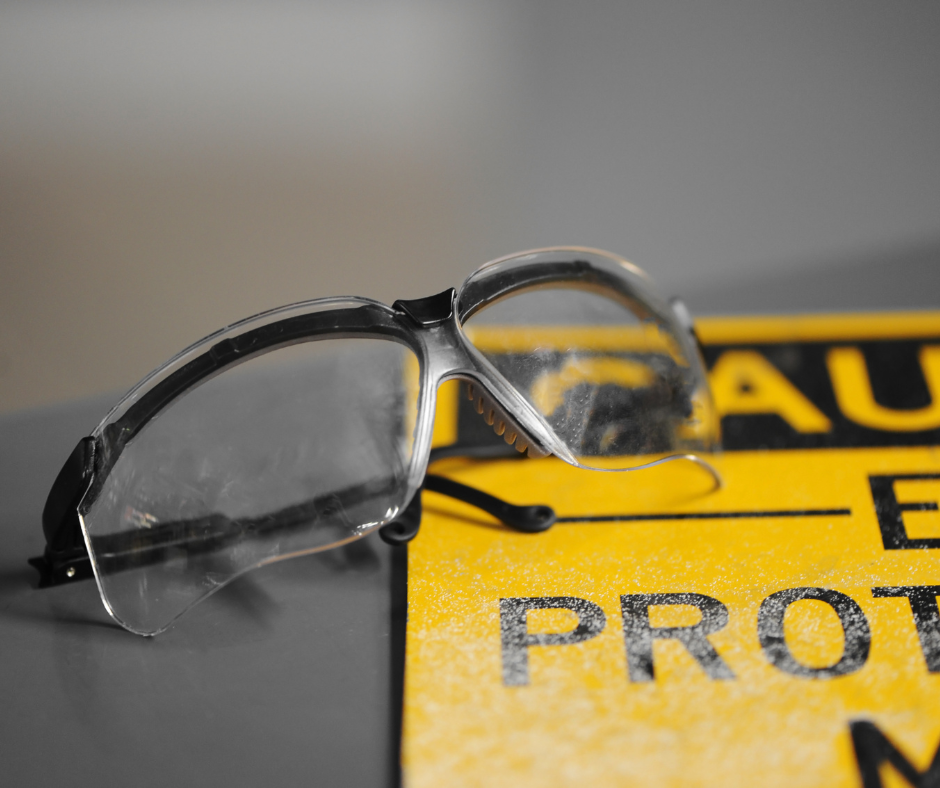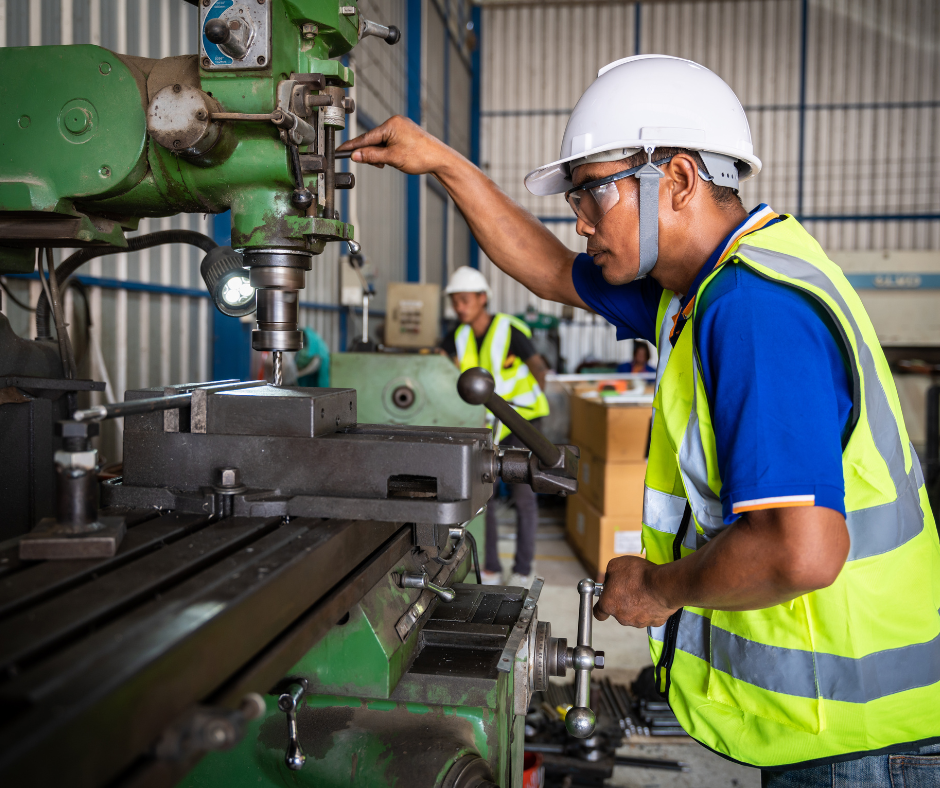This blog can be delivered to your staff as a Toolbox Talk. If you require a specific Toolbox Talk for your workplace, please feel free to get in touch.
Reason: On average, 1,000 injuries to people’s eyes occur every day: 75% by impact, 10% by ingress of foreign bodies (dust) and 15% by burns or chemicals. The majority of these injuries could have been prevented if eye protection had been worn.
Outline: This talk covers the hazards and the reasons for wearing eye protection.
Possible causes of eye injury
-

Using hammers, chisels or power tools (such as drills, sanders or jigsaws).
- Using compressed air and any gas, liquid or vapour under pressure.
- Working with power tools where debris may be given off at speed (for example, using an abrasive wheel).
- Working with tools that will result in chippings being broken off (for example, using breakers).
- Welding, when ultraviolet (UV) light is given off that can damage your eyes.
- Handling, or coming into contact with, corrosive or irritant substances (such as acids or alkalis).
- Handling and using cartridge-operated or compressed gas tools (such as a nail gun).
- Cutting of wire or metal strapping that is under tension (such as brick bands).
Wearing eye protection
 You have a legal obligation to use any eye protection provided.
You have a legal obligation to use any eye protection provided.- Don’t go into areas where eye protection is required unless you are wearing it.
- Ensure your eye protection fits you and is suitable for the job. Some tasks require high-impact eye
protection. - Ensure that any lost or damaged eye protection is replaced immediately; don’t be tempted to work
without it. - Your eye protection should be appropriate for the job, comfortable to wear and kept clean.
- There are several grades of eye protection, each to combat a different type of hazard. Only use the
eye protection designated for the job you are doing. - All eye protection should carry a CE mark to show it has been made to an industrial standard.
- Take care of your eye protection when it is not being worn and use a protective case.
- Impact resistant eye protection is available in different grades.
- Refer to your risk assessment or ask your supervisor for details on the type and grade of eye protection to
be worn for the task.

What are the hazards associated with compressed air?
How can welding affect unprotected eyes?
What must you ensure when you are issued with eye protection?
How do you know that you are wearing the correct grade of eye protection?
What should you do if you get something in your eye?
What should you do if you damage your eye protectors?
What are the hazards when using an abrasive wheel?

Abrasive wheels on portable machines rotate at speeds in excess of 170 mph.
There are many different grades of eye protection. Make sure you have the right grade for the job.
If you have any questions about the contents of this Toolbox Talk, do not hesitate to contact us – our team would be happy to help you with any queries. Find more Toolbox Talks here.


